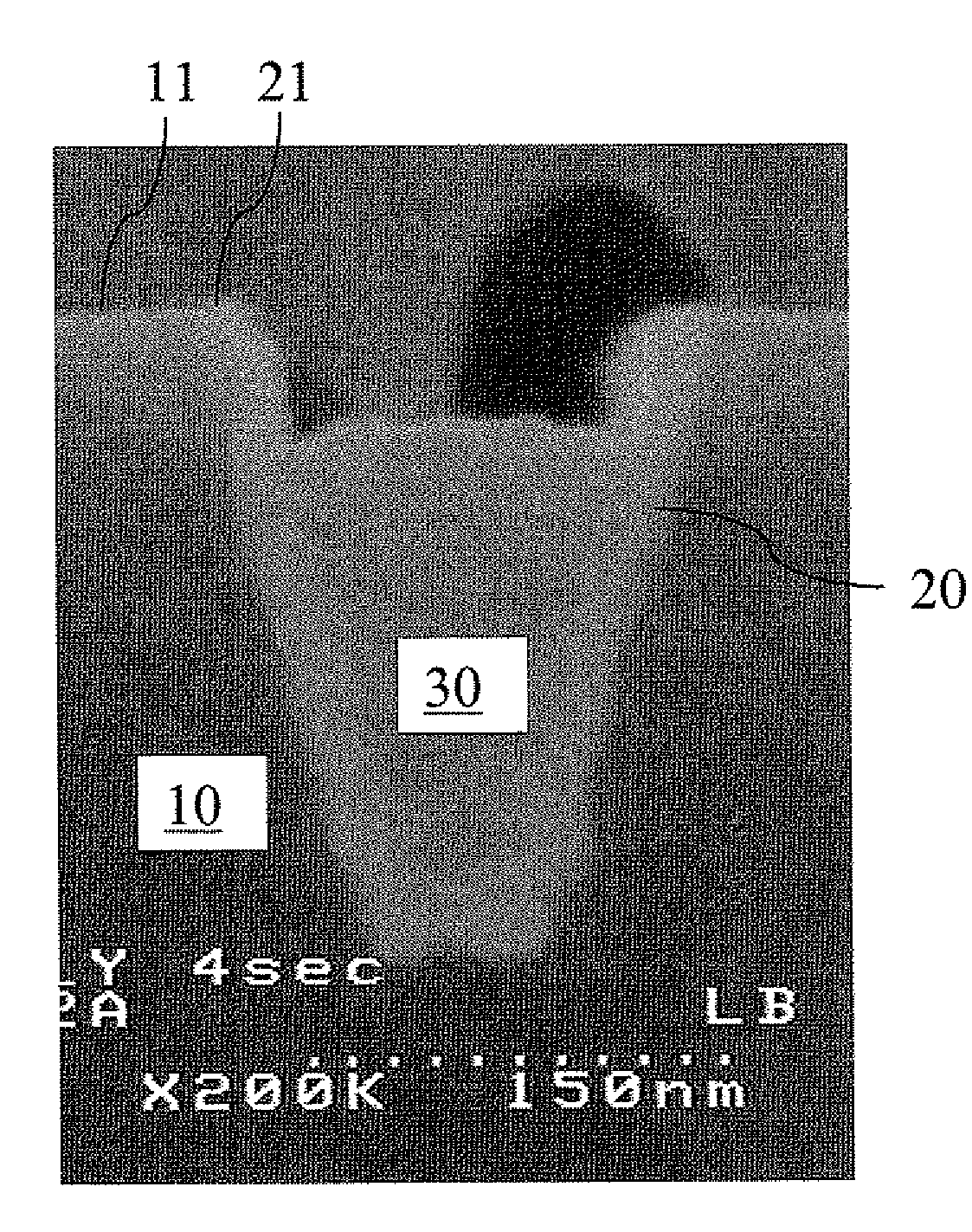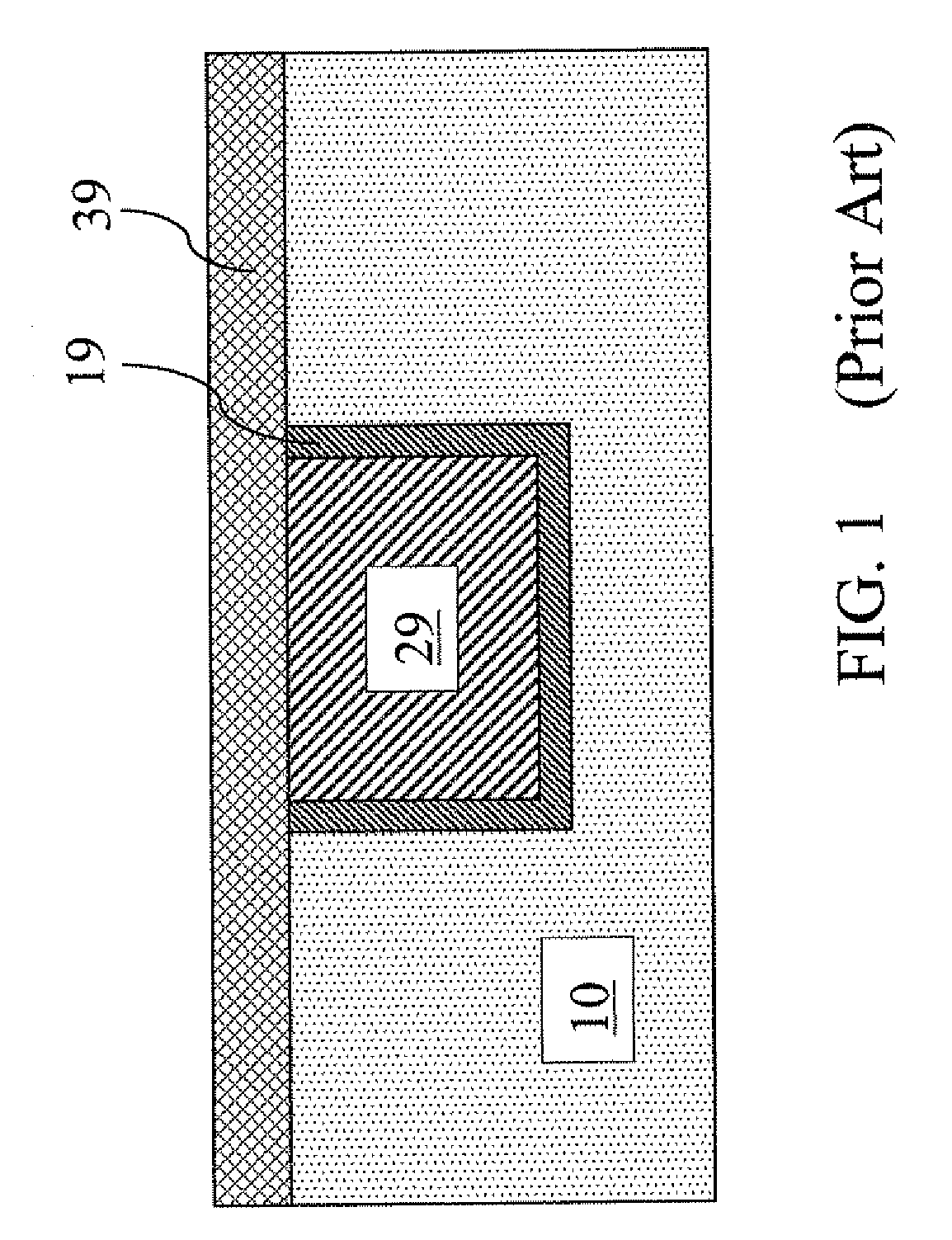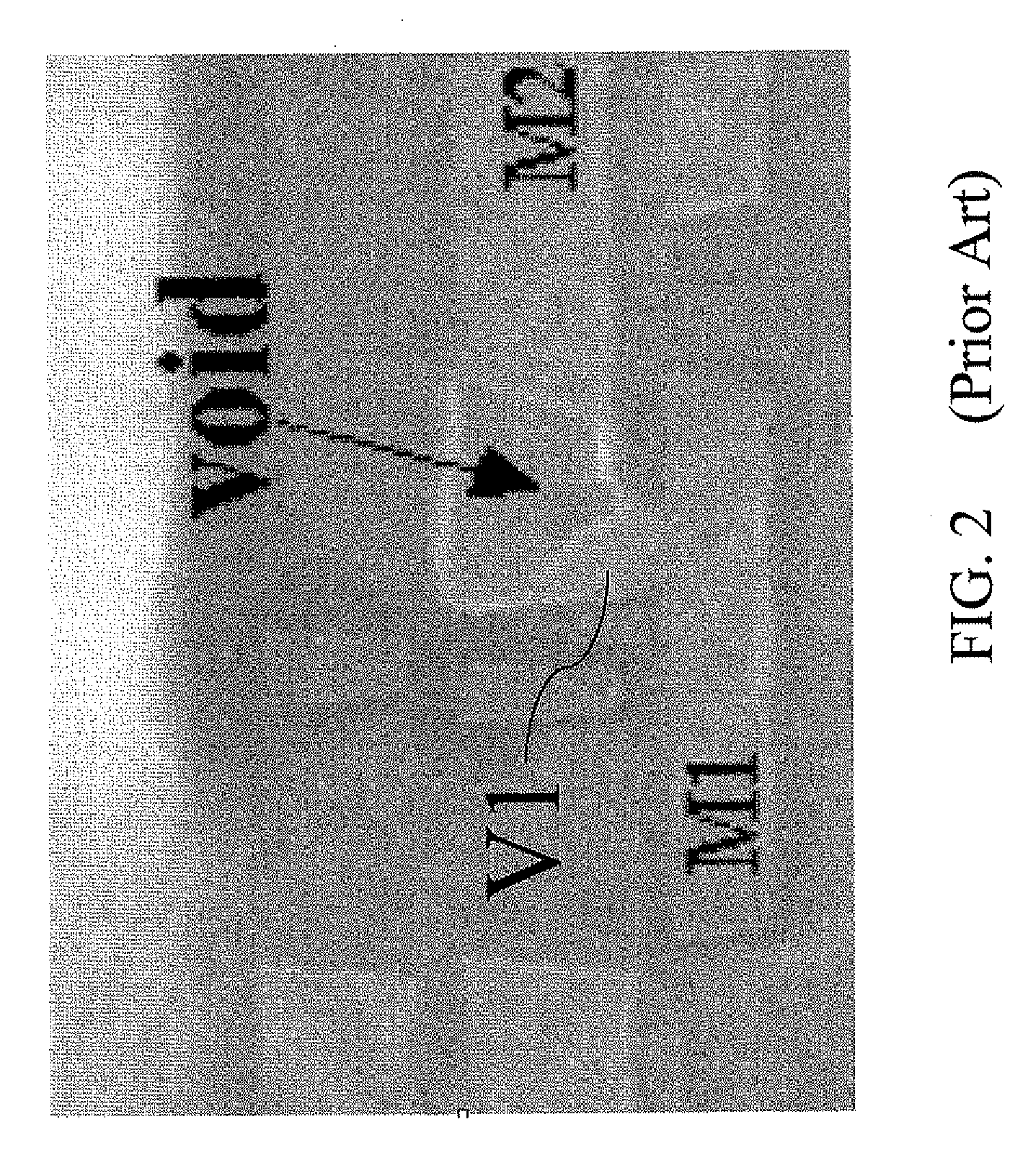Electromigration resistant interconnect structure
a technology of electromigration resistance and metal interconnect, which is applied in the direction of semiconductor devices, semiconductor/solid-state device details, electrical apparatus, etc., can solve the problems of metal ions to dislodge from the lattice and move physically, metal line or metal via no longer providing a conductive path in the metal interconnect, and product failure of semiconductor devices, etc., to achieve the effect of reducing parasitic resistance and increasing the electromigration resistance of the metal lin
- Summary
- Abstract
- Description
- Claims
- Application Information
AI Technical Summary
Benefits of technology
Problems solved by technology
Method used
Image
Examples
first embodiment
[0059]Referring to FIG. 3, a first exemplary metal interconnect structure according to the present invention comprises a dielectric layer 10 containing a line trench LT, or a trench formed along a line. The sidewalls of the line trench LT may be substantially vertical, or may have an inward taper so that the bottom surface of the line trench LT is narrower than the opening at the top portion of the line trench LT. The taper angle may be from 0 degree to about 30 degrees, and typically from about 5 degrees to about 20 degrees, depending on the material of the dielectric layer 10, the width of the opening at the top portion of the line trench LT, the etch chemistry employed in etching the line trench LT, and the depth of the line trench LT.
[0060]The dielectric layer 10 may comprise an oxide based conventional dielectric material, which has a dielectric constant k from about 3.6 to about 3.9, or a low-k dielectric material, which has a dielectric constant k of about 3.0 or less, prefer...
second embodiment
[0074]Referring to FIG. 12, a second exemplary metal interconnect structure according to the present invention is derived from the first exemplary metal interconnect structure of FIG. 7 by depositing a metallic line cap layer 49 on the metal line top surface 31, a top portion of inner sidewalls of the metal liner 20, and the dielectric layer top surface 11. Preferably, the thickness of the metallic line cap layer 49 is at least equal to the recess depth d, and may be from about 5 nm to about 100 nm, and preferably from about 12 nm to about 50 nm, although lesser and greater thicknesses are herein contemplated also.
[0075]The metallic line cap layer 49 comprises a stress-generating material that may apply a compressive stress on a structure directly underneath. For example, the metallic line cap liner 39 may comprise one of Ti, TiN, Ta, TaN, WN, and CoWP. The metallic line cap liner 39 may, or may not, comprise the same material as the metal line 20. The metallic line cap liner 39 may...
PUM
| Property | Measurement | Unit |
|---|---|---|
| compressive stress | aaaaa | aaaaa |
| compressive stress | aaaaa | aaaaa |
| compressive stress | aaaaa | aaaaa |
Abstract
Description
Claims
Application Information
 Login to View More
Login to View More - R&D
- Intellectual Property
- Life Sciences
- Materials
- Tech Scout
- Unparalleled Data Quality
- Higher Quality Content
- 60% Fewer Hallucinations
Browse by: Latest US Patents, China's latest patents, Technical Efficacy Thesaurus, Application Domain, Technology Topic, Popular Technical Reports.
© 2025 PatSnap. All rights reserved.Legal|Privacy policy|Modern Slavery Act Transparency Statement|Sitemap|About US| Contact US: help@patsnap.com



